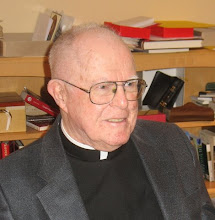DIFFERENT VISIONS OF CHURCH
Orhan Panuk, winner of the 2006 Nobel Prize in Literature, wrote “Istanbul”, a memoir of his growing up and living in that city. Here he experienced the intersections of West and East, the past and the present, the rich and the poor, the visions of the city’s inhabitants and the visions of visitors from other countries. To maintain the vitality of his own connection to his city, he must see it from different points of view. Panuk describes how writers and painters from the West have articulated their views of Istanbul, how his parents and grandparents kept him in touch with the long-faded Ottoman empire, how newspaper columnists over the last 130 years and native writers captured the ordinary and the extraordinary in the life of the city. He describes how all these influences temper his own vision of the city and keep him from misidentifying his view as the objective reality.
Much like a city, the Church, if its reality is to be understood, is to be seen from different points of view, each producing a different vision: that of ancient times, then medieval times, that of reformed Christianity, of the contemporary Church; the clerical vision, that of the observant faithful, of the marginally faithful, of outsiders; the picture of the Northern European church, differs from that of the Mediterranean church. The vision of the Church from the tower of clericalism is a distorted vision, falling into the very error warned against by Panuk: misidentifying one’s vision as the objective reality. An example: Pope John Paul II on April 23, 2002 in his address to the US bishops, assembled in Rome about the abuse crisis, declared, “… the Church will help society to understand and deal with the crisis in its midst.” This being said just after society had forced the Church to see and deal with its own crisis by society's instruments of the press, district attorneys, and trial lawyers. Last August, Cardinal Tarcisio Bertone, Vatican Secretary of State, addressing the Knights Of Columbus convention, declared that the church “…had faced this trial with dignity and courage.” Really? JP II and his Secretary of State have a quite different vision of the church than do most observers. Then, after Cardinal Law was driven from Boston by his priests and people for secretly transferring miscreant clergy, John Paul named him rector of a prestigious church in Rome. The pope either totally misunderstood the situation or simply did not care how the faithful and outsiders perceived the church and its head.
What is the reality of our Church, not as it exists in ideal concept or in the vision of clericalism, but as it exists and is perceived in society? How do outsiders perceive our Church? A sociological study of the many points of view would help in understanding the reality of this institution and facilitate its mission.
Much like a city, the Church, if its reality is to be understood, is to be seen from different points of view, each producing a different vision: that of ancient times, then medieval times, that of reformed Christianity, of the contemporary Church; the clerical vision, that of the observant faithful, of the marginally faithful, of outsiders; the picture of the Northern European church, differs from that of the Mediterranean church. The vision of the Church from the tower of clericalism is a distorted vision, falling into the very error warned against by Panuk: misidentifying one’s vision as the objective reality. An example: Pope John Paul II on April 23, 2002 in his address to the US bishops, assembled in Rome about the abuse crisis, declared, “… the Church will help society to understand and deal with the crisis in its midst.” This being said just after society had forced the Church to see and deal with its own crisis by society's instruments of the press, district attorneys, and trial lawyers. Last August, Cardinal Tarcisio Bertone, Vatican Secretary of State, addressing the Knights Of Columbus convention, declared that the church “…had faced this trial with dignity and courage.” Really? JP II and his Secretary of State have a quite different vision of the church than do most observers. Then, after Cardinal Law was driven from Boston by his priests and people for secretly transferring miscreant clergy, John Paul named him rector of a prestigious church in Rome. The pope either totally misunderstood the situation or simply did not care how the faithful and outsiders perceived the church and its head.
What is the reality of our Church, not as it exists in ideal concept or in the vision of clericalism, but as it exists and is perceived in society? How do outsiders perceive our Church? A sociological study of the many points of view would help in understanding the reality of this institution and facilitate its mission.


1 Comments:
Archangel,
I miss your clear vision of the Church a view that could be expected from someone far more distant from the center than you are.
Gene Reilly
Post a Comment
Subscribe to Post Comments [Atom]
<< Home